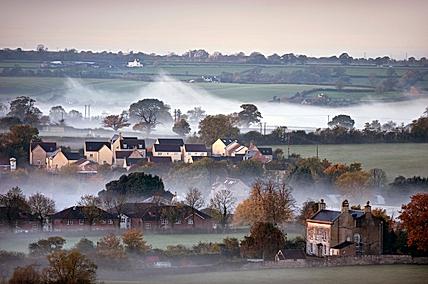The solar industry in the UK was amused by a story recently reported about a proposal for a solar farm in Woodland, North Carolina. The land around Woodland is a popular choice for solar farms because it has an electrical substation that the solar park can connect to. Plans for three other solar farms had previously been approved by the council, but at the meeting a petition rejecting any solar farms coming to the area was handed to the council by the local community and it was requested that any future solar farm applications be put to a referendum.
-
A science teacher feared that plants in the vicinity of the panels would not photosynthesize, which would prevent the plants from growing.
-
The science teacher also questioned the high number of cancer deaths in the area, saying no one could tell her that solar panels didn’t cause cancer.
-
A member of the community expressed fears that the solar farms would suck up all the energy from the sun.

Company representatives from the solar developers tried to put the concerns of residents at ease. They told them “there are no toxic materials on site” and “this is a tried and true technology.” However, the council voted 3-1 against the development, and later voted for a moratorium on future solar farms.
Communities who suddenly find themselves grappling with the science and technology involved, not to mention the vested interests of the developer and the landowner (who may be a neighbour and friend), the reaction of the people of Woodland, North Carolina, is no different to that of any rural community in the UK. For them, it’s not amusing at all. At the parish council stage, the process of distinguishing fact from fiction, or scaremongering from genuine reasons for concern can cause long-term upset and damage to relationships in a small community.
With all those vested interests at work, the media bias and their laziness in reporting and repeating some of the myths around renewable energy, where can communities find unbiased, factual information? They need to research the long-term impact of renewable energy developments on their local environment, and then find the time to organise, assess, debate and decide for themselves. Often the only way they can slow the process down is to dig in their heels and object. The outcome may be the same, but with so little time to tread carefully, perhaps individuals in the community feel pressured into taking sides.
Through our close relationship with British Renewables, one of the UK’s biggest renewable energy developers, CH&P has direct access to accurate, spin-free information. Added to that, living in and working on behalf of rural communities for many years, at CH&P we understand exactly how individuals might feel about their back yards being used to solve a national energy crisis, and to address the requirement for a global reduction in the use of fossil fuels.
Fears about pollution, noise, tourism, footpaths, visibility, biodiversity, glare, damage, destruction – these are all issues brought up at every stage of the planning process. Overcrowding is a new theme. As the grid reaches capacity in places like Cornwall, where support for renewable energy has been very high, areas close to substations all over the countryside are coming under greater pressure.
Rural substations were sited in quiet areas with very low population; trees and hedges were planted and now 50 years later, only the pylons are visible. Communities around a substation might not even notice them except perhaps in winter when the trees are bare, such has been the success of the screening which the planners insisted on all those years ago. (When some of these substations went in, the surrounding villages were just glad to get electricity for the first time.) So when the third or fourth application for another solar park goes in, communities naturally ask – where does this end? Because they genuinely don’t know. Grid capacity isn’t something any of us have had to think about, let alone peak demand and the Coronation Street hour. It’s all been handled in someone else’s back yard, at Hinckley, Sizewell, Dungeness.
I live and work near a substation and several solar parks and I’ll be glad when the screening grows up – they are not attractive. These are sited on green fields, and most are grazed by sheep. The NFU recommends a rest period of 25 years for land to completely recover, which equates to the length of temporary planning permission. In that time, the stringent requirements on screening, environmental monitoring and biodiversity will have had an enormous and beneficial impact on the flora and wildlife around these sites. So who will be laughing then, in 25 year’s time, as the solar parks are dismantled and removed, and the community finds it is living beside acres of prime organic land with as good an array of wildlife as it can possibly support?
Whatever the outcome of the planning process, Community Heat & Power will continue to give communities the support and information they need to make informed choices about their local environment and the future of energy.
Hannah Lovegrove







